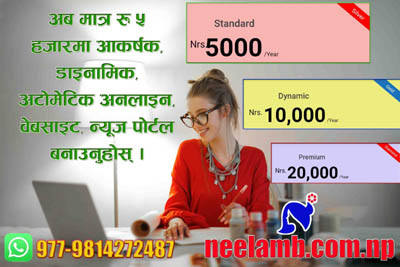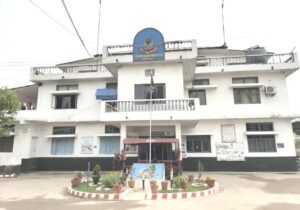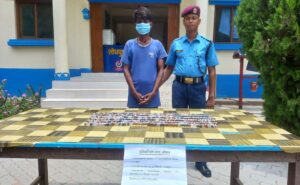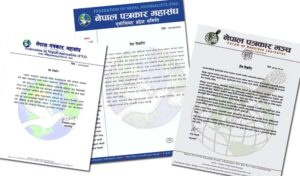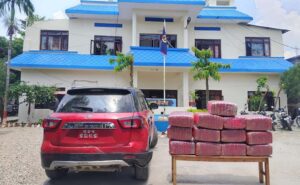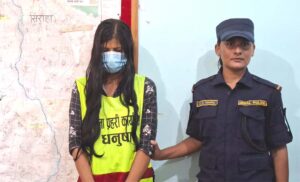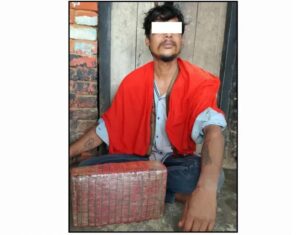Kathmandu. Bhaktapur is famous for clay handicrafts and the craft of embroidering art on them. Bhaktapur’s women artists did this week a festival to enhance Raithane art, empower artistic voice and search for entrepreneurship.
Mark Nafzigar and Joyce, a famous artist couple from America, inspired these Nepalese artists to sharpen their skills. They came to Nepal under the US Embassy’s ‘Arts Envoy 2024’ program and conducted a ‘Ceramic Workshop’ at Pottery Square in Bhaktapur from 18 to 22 November.
In a workshop attended by 10 women artists, they encouraged participants to preserve tradition, inspire innovation and connect communities through art.
The participants also shared their experience while giving final shape to their artworks. An exhibition was also organized on the occasion, in which the beautiful artworks created throughout the week were presented. The embassy said that the workshop has contributed to the creation of works that respect cultural heritage, from the use of materials and glazing techniques.
One of the participants, Aishwarya Shakya, said that although she has been making pottery for a long time, the workshop inspired her to be more creative. He says that this workshop has encouraged him to move forward in entrepreneurship.
Mike Harker, head of public affairs at the embassy, said the aim of the ‘Arts Envoy’ program is to share artistic techniques between cultures, bridge cultural differences within communities and create meaningful dialogue.
‘Mark and Joyce’s work helps bring new ideas to the community. In addition, it creates professional relationships that help artists grow their businesses,” Harker said. He said that the American support and respect for Nepali culture and tradition is widespread, and he said that there is an ambassador fund for the preservation of Nepali culture.
Presenting the fact that more than 4.5 million dollars have been contributed to 28 historical sites across Nepal, he said that the participation of Mark and Joyce is an example. On this occasion, Online News talked to Mark and Joyce about the experience of the art workshop and Nepal tour.
How did you get attracted to pottery and ceramics?
sign : When I went to university, I had no intention of becoming a pottery artist. I have a degree in mathematics. While studying mathematics, I also learned a little art work there. I met my future wife then. She was an art student at that time.
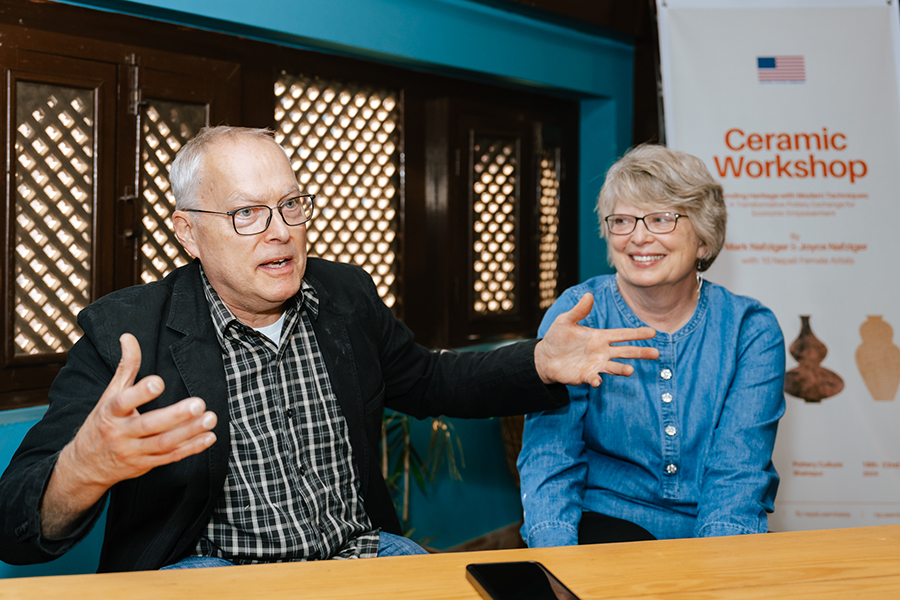
I then pursued a degree in both mathematics and art. I had no plan to become a pottery artist even after graduation. Instead, I was looking at a college that taught this subject with the thought of becoming an architect. At that time I got an opportunity to open a studio in a village like Bhaktapur. It was a village decorated like art. The number of artisans working there was also high.
There used to be a lot of tourists who paid money to see our work. Tourists used to come to see my studio. I especially wanted to work as a mathematician. But let’s say that I came to art by ‘accident’ (laughing). My journey towards artistry was unexpected. I would like to introduce myself as an unexpected pottery artist.
Do you have anything to say about participating in the US Embassy’s ‘Arts Envoy’ program?
I was invited to participate in an exhibition held at the embassy residency. Where I was asked for a special art performance. From that, this invitation proceeded as Nepal’s art ambassador. I have never been to Nepal before. I was told to come when needed, I was ready for it. That is why we have arrived.
What have you learned about new technology studies?
‘Investigation’ may be a strong word. I think soil is a strong bridge between cultures. Everything we do is influenced by the past. All my decorating methods are antique style. There may be differences in the way we work. The technology we use may be different.
But the way we do it and the tools are not traditional, we use things from plastic bottles, which applies to my color. It is a style, a ‘decorating technique’ that I have been working on for 43 years. I can really take credit for that.
I worked on it for so long. This style takes every artist back to the origin of the world and is basically the same amazing creation. Some of these technicians will find historicity in art. Hope I am doing justice and covering it. I am inspiring today’s artists with the little knowledge I have gained from my work.
What differences and similarities do you find between Nepal and the US when it comes to traditional practices in pottery and ceramics art?
I think that all pottery artists in the world have a similar way of working. We are always worried whether we can find the soil we are looking for or not. There is also concern that minerals are also disappearing from the soil. We also share concerns about this. Some jobs are also connected with culture. This is the equality we are experiencing. That is why we are working on pottery as a cultural bridge.
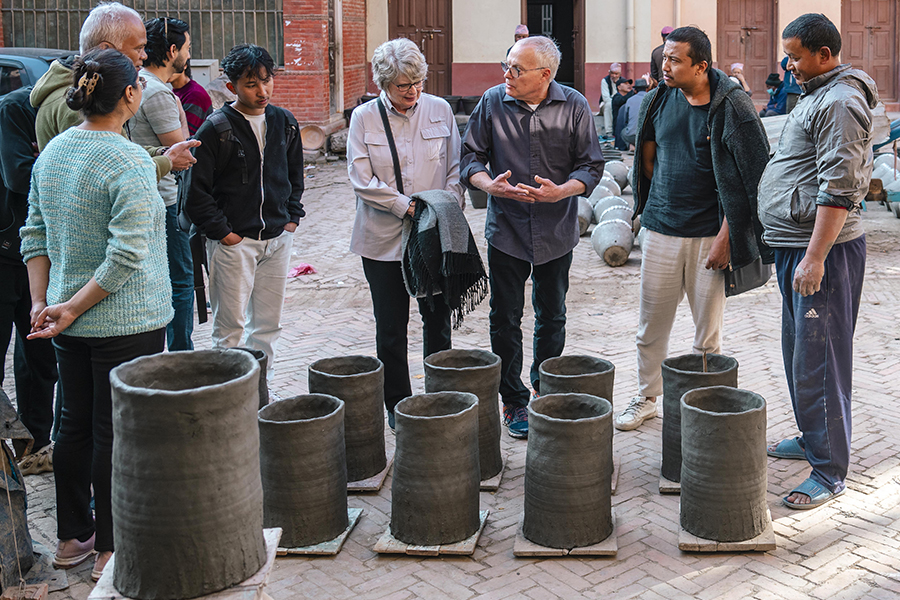
How do you plan to mix Nepal’s traditional pottery art with modern ceramic technology?
I am sharing this decorating technique and style. Can’t say exactly how to use it but I will share my product experience here. We provide technical content and creative suggestions to Nepali participating artists. It gives them a lot of creative energy. I can’t imagine how this could fit into this culture. I don’t think it’s an imposition on culture.
The aim of the workshop is to empower women through art. How can pottery and ceramics contribute to the economy and entrepreneurship of these artists?
People can connect with handicraft materials. It seems that the artist can feel belonging to the art until it is given its final form. They can recognize a person as long as the pieces of the figure are made.
In my studio, I have seen that such art has also benefited the artist’s economic development, creating intimacy with the art on display. I have seen such art in my studio help the community and the artist’s personality.
Art has found a market through exhibitions in the states where we live in America. Artists also get financial benefits. For every female artist we work with, it inspires them to develop a style, connect with others, and produce art economically and practically. When you only make pottery crafts but don’t sell them, it becomes just a pile of art.
What advice would you like to give to participating artists in terms of building a sustainable career?
Don’t be discouraged, keep working. Work again and again. This requires practice, determination and patience. Don’t stop working. This is my big advice.
Have you found that working in Nepal has influenced your artistic approach?
(laughing). This thing looks like a window curtain. I have seen the form and shape of the creations prepared by Nepali artists. Instead, I found myself very lazy.
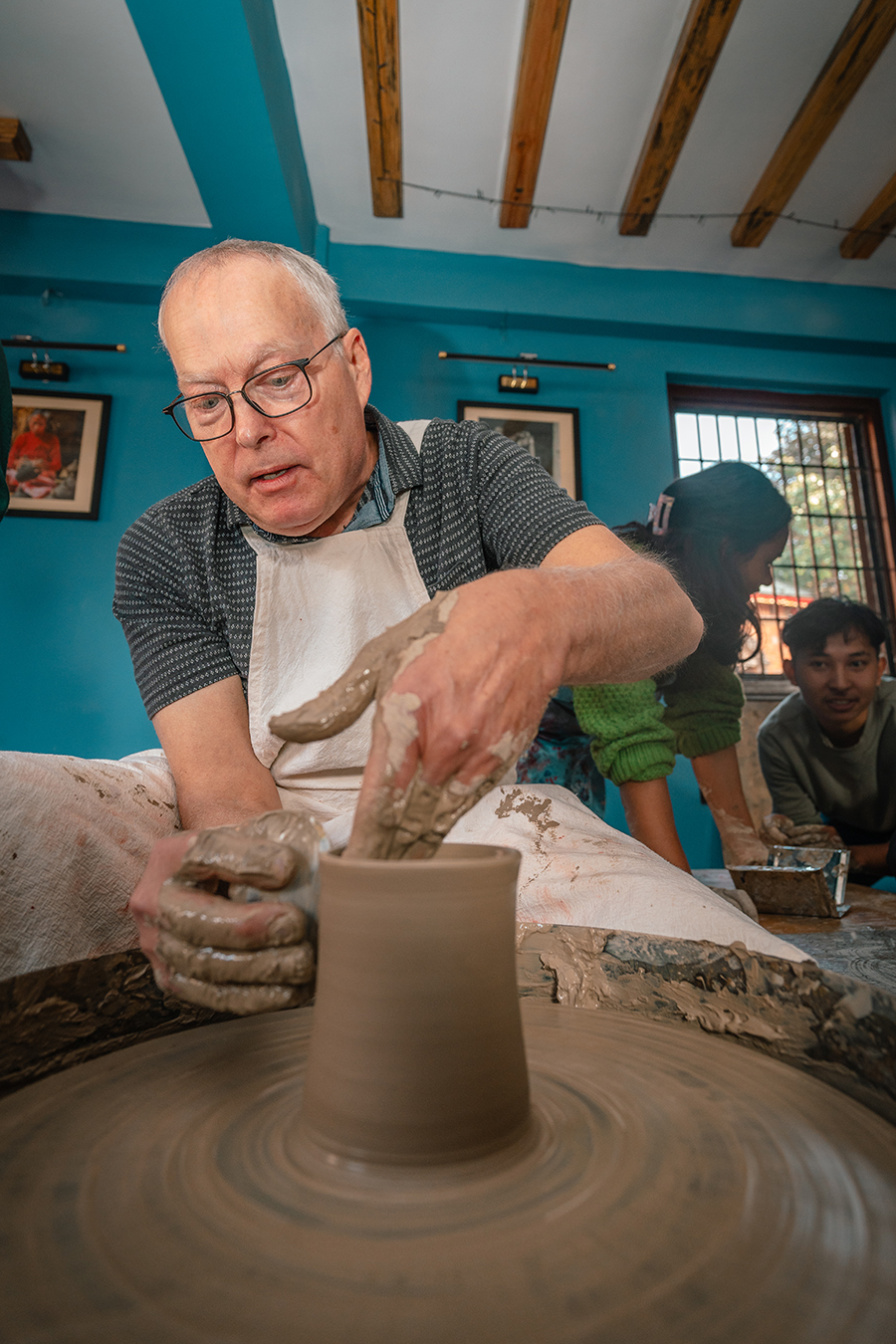
Is there any possibility of collaborating with Nepali artists in the future?
There are some plans. I have received some invitations for this. Let’s see what happens about this collaboration. I definitely want to come back and work again. I want to show hospitality to Nepali Pottery in my studio. At some point it might be possible.
How does cultural diplomacy make good relations between Nepal and America?
If citizens can be brought closer together with common interests and interests, it will immediately form a bridge of relationship.
What are your plans for staying in Nepal?
We are going on a trek to Pokhara and Chitwan. We can go to Everest region by helicopter. This week we celebrated our 45th wedding anniversary. This visit has been like an ‘anniversary gift’ for us.
What message do you want to give to Nepali artists?
Joyce : Art brings people closer. Follow your heart. Follow the dream. I followed my path and came here. I hope this is an inspiring message for them.
Don’t get discouraged and keep working. Promote creation. Ultimately we are all creators. Creation builds bridges and connects us. I also believe in this. Not everything is permanent. is changeable.
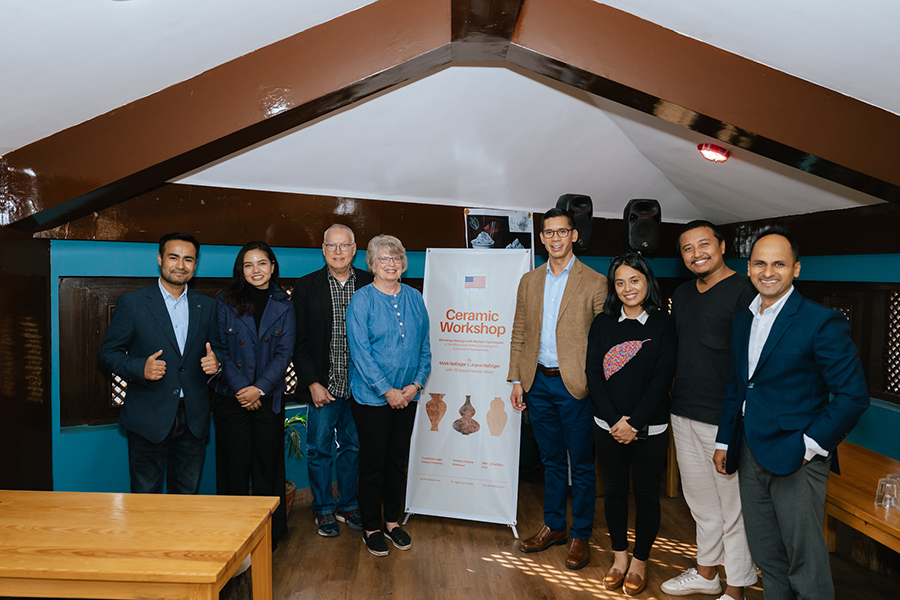
Keep creating. If we start pottery manufacturing as promised, there will definitely be improvement. Failure to focus on improvement can lead to bad results. Be inspired.
How did you feel working with the culturally rich local women artists of Nepal?
In this workshop we have discussed ideas. They created art in new styles and shapes. There is an atmosphere of enthusiasm.
Especially how was your experience at ‘Pottery Square’ Bhaktapur?
It has been amazing. The people and workshop participants are amazing. We have given each other ideas. We have taught you how to use specific materials. The participants created beautiful creations in the clay handicrafts they made. It has been a wonderful experience for us.


